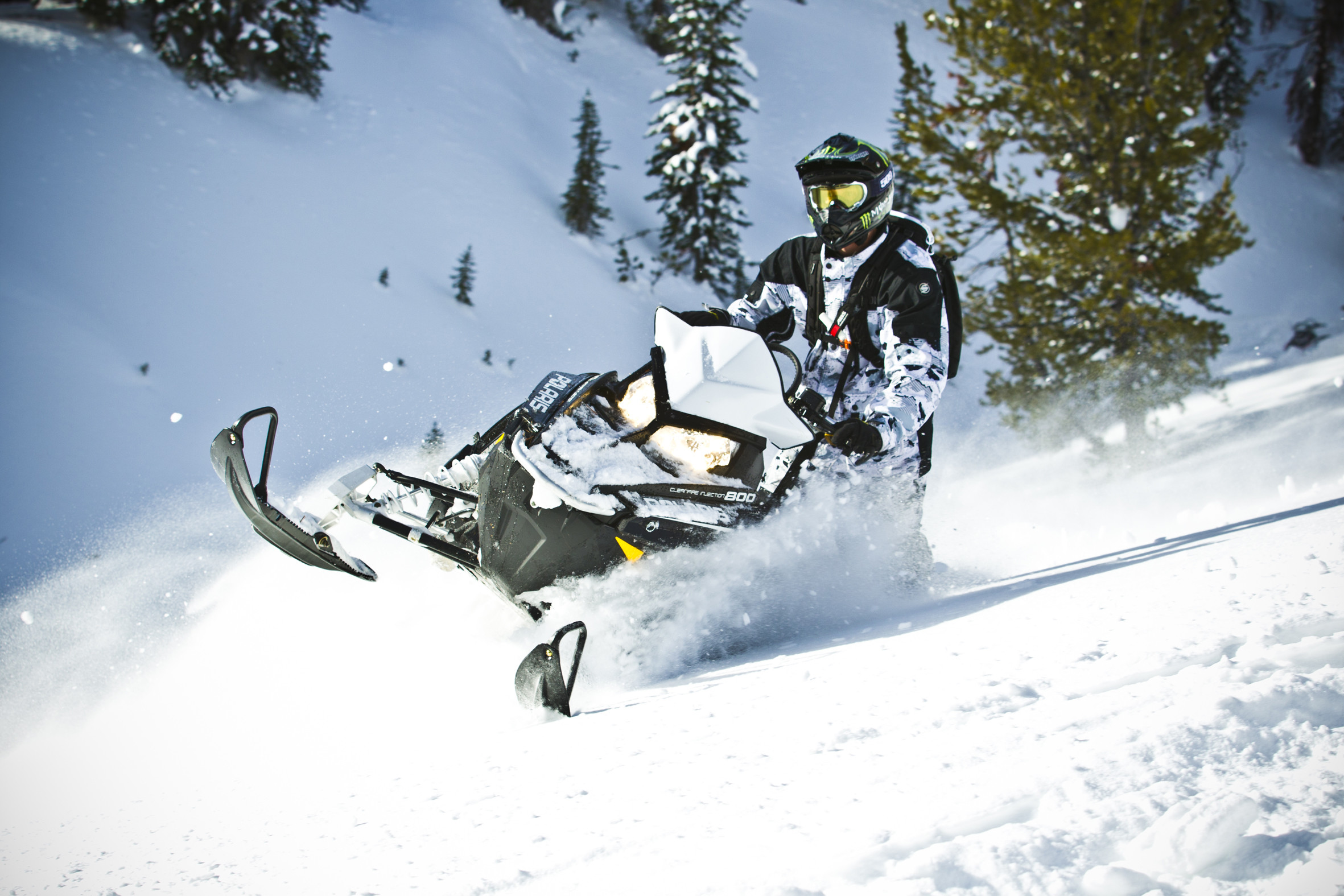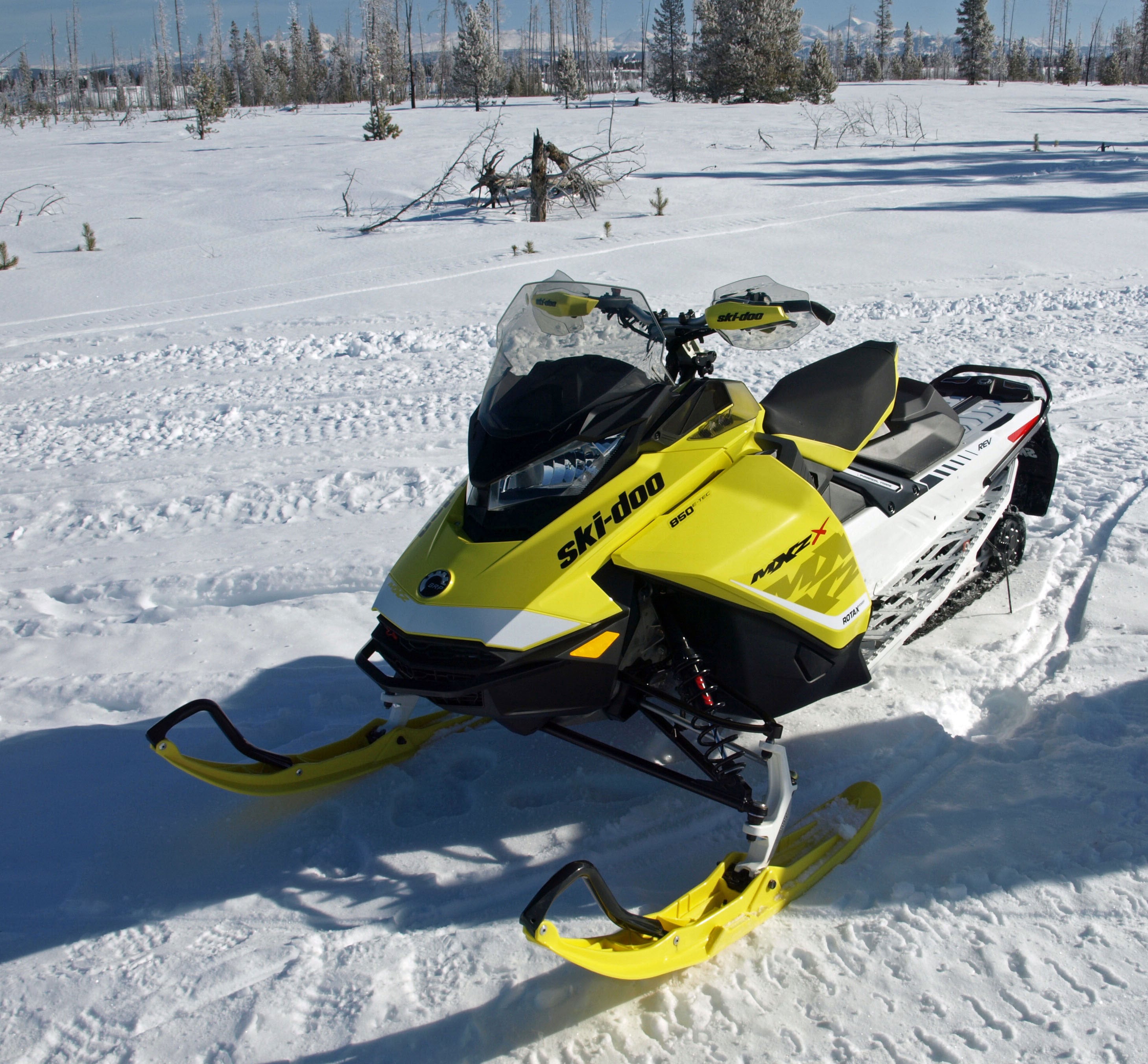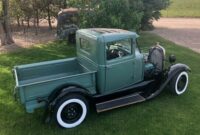Snowmobile Ramps For Pickup Trucks: Your Ultimate Guide to Safe and Efficient Loading pickup.truckstrend.com
The thrill of fresh powder and the roar of a snowmobile engine are irresistible to enthusiasts. But before you can carve through the backcountry, there’s a crucial first step: getting your snowmobile from your garage to the trailhead. For pickup truck owners, this often involves navigating the challenge of safely loading and unloading a heavy, cumbersome machine into the truck bed. This is where snowmobile ramps for pickup trucks become indispensable tools, transforming a potentially hazardous chore into a smooth, secure, and efficient process.
At its core, a snowmobile ramp is a specialized loading ramp designed with features that accommodate the unique structure of a snowmobile, particularly its skis and track. Unlike generic utility ramps, these ramps offer specific channels for skis, ample width for tracks, and often an arched design to prevent bottoming out. They are the bridge between your truck bed and the ground, ensuring your prized sled reaches its destination without a scratch, and more importantly, without injury to yourself.
Snowmobile Ramps For Pickup Trucks: Your Ultimate Guide to Safe and Efficient Loading
Why You Need a Dedicated Snowmobile Ramp
Attempting to load a snowmobile without a proper ramp is a recipe for disaster. Here’s why investing in a dedicated snowmobile ramp is not just a convenience, but a necessity:
- Enhanced Safety: The primary benefit. Loading a 500-pound-plus machine up a steep incline can lead to slips, falls, or the snowmobile rolling off, causing severe injury to the operator or bystanders. Proper ramps provide stability and traction, minimizing these risks.
- Protection for Your Snowmobile: Skis can get bent, tracks can be damaged, and the chassis can be scratched or dented if not loaded correctly. Snowmobile ramps feature ski guides and appropriate surfaces to protect your sled during the loading process.
- Protection for Your Pickup Truck: The tailgate and truck bed can sustain significant damage from the impact and weight of a snowmobile being improperly loaded. Ramps distribute weight evenly and prevent direct impact.
- Efficiency and Convenience: A good ramp makes loading a quick, one-person job. No more struggling, recruiting extra hands, or resorting to dangerous makeshift solutions.
- Compliance with Insurance: In the event of an accident during loading, using appropriate safety equipment like a dedicated ramp can be crucial for insurance claims and liability.

Types of Snowmobile Ramps: Finding Your Perfect Match
Snowmobile ramps come in various designs, each offering specific advantages. Understanding these types will help you choose the best ramp for your needs:

Arched Ramps:
- Description: These ramps feature a noticeable curve or arch in their design.
- Benefit: The arch provides additional clearance, preventing the snowmobile’s belly pan or suspension from bottoming out on the tailgate or truck bed as it transitions from the ramp to the truck. This is especially important for trucks with higher beds or snowmobiles with lower ground clearance.
- Ideal For: Most modern snowmobiles and trucks, particularly those with higher lift kits.

-
Straight Ramps:
- Description: As the name suggests, these ramps are straight from end to end.
- Benefit: Simpler and often more affordable. Can be suitable for lower trucks or snowmobiles with higher ground clearance.
- Consideration: May increase the risk of bottoming out for some setups.
-
Folding Ramps:
- Description: Designed to fold in half (bi-fold) or into multiple sections (tri-fold), making them compact for storage and transport.
- Benefit: Excellent for portability, as they take up less space in the truck bed or garage.
- Ideal For: Users with limited storage space or those who frequently transport their ramp.
-
Solid (Non-Folding) Ramps:
- Description: Single-piece construction, offering maximum rigidity and often higher weight capacities.
- Benefit: Extremely durable and stable. No hinges to wear out.
- Consideration: Require more storage space.
-
Single vs. Multi-Section Ramps:
- Single Ramp: Designed for one snowmobile, often with integrated ski guides and a central track area.
- Multi-Section (e.g., Tri-Fold): Wider ramps that fold into three sections. Can accommodate wider snowmobile tracks or even ATVs/UTVs if designed for multi-use. Some setups even allow for two narrow sleds side-by-side.
-
Material:
- Aluminum: Most common due to its excellent strength-to-weight ratio. It’s lightweight, corrosion-resistant, and durable.
- Steel: Heavier and very strong, but prone to rust if not properly coated. Less common for snowmobile ramps due to weight.
Key Features to Look for When Buying
Choosing the right ramp involves more than just picking a type. Consider these critical features:
- Weight Capacity: This is paramount. Ensure the ramp can safely support the weight of your snowmobile plus your own weight (if you ride it up). Always err on the side of caution.
- Length and Width:
- Length: A longer ramp provides a gentler incline, making loading easier and safer, especially for higher truck beds. A good rule of thumb is that the ramp should be 2.5 to 3 times the height of your tailgate from the ground.
- Width: Ensure the ramp is wide enough to accommodate your snowmobile’s track and ski stance comfortably. Integrated ski guides are a huge plus.
- Traction and Surface: The ramp surface must provide excellent grip for the snowmobile’s track and your boots, even in icy or snowy conditions. Look for raised rungs, grates, or textured surfaces. Some ramps also feature plastic "glides" for skis, reducing friction and wear.
- Attachment Mechanism: Secure attachment to the truck is vital. Look for heavy-duty straps, adjustable hooks, or pins that prevent the ramp from slipping away from the tailgate during loading.
- Portability and Storage: If you need to transport the ramp frequently, a folding design is beneficial. Consider its folded dimensions and weight.
- Tailgate Protection: Some ramps come with rubberized ends or protective pads to prevent scratching or denting your truck’s tailgate. You can also purchase separate tailgate protectors.
- Durability and Construction: Inspect welds, hinge quality (for folding ramps), and overall build. A well-constructed ramp will last for years.
How to Safely Load a Snowmobile onto a Pickup Truck
Loading a snowmobile is an art and a science. Follow these steps for a safe and successful process:
-
Preparation is Key:
- Level Ground: Park your truck on a flat, level, and firm surface.
- Engage Brakes: Set your truck’s parking brake firmly.
- Clear the Path: Ensure the area behind the truck and the ramp is clear of obstacles, people, or pets.
- Open Tailgate: Lower your tailgate completely.
-
Position the Ramp:
- Place the ramp securely onto the tailgate. Ensure the attachment mechanism (straps, hooks) is properly engaged and tightened to prevent any movement.
- Confirm the ramp is centered and aligned with your truck bed.
-
Loading the Snowmobile (Slow and Steady):
- Start with Caution: Approach the ramp slowly and directly. Never attempt to "jump" the snowmobile onto the ramp.
- Throttle Control: Apply just enough throttle to get the track moving up the ramp steadily. Excessive throttle can cause the sled to lurch, potentially losing control.
- Body Position: Maintain a balanced stance on the running boards. Lean slightly forward to maintain traction on the track and keep the skis from lifting too high.
- Maintain Momentum: Keep a consistent, slow speed. Pausing mid-ramp can make it harder to restart and increase the risk of slipping.
- Transition to Truck Bed: As the snowmobile approaches the top of the ramp, be prepared for the change in incline. Continue with steady throttle until the entire snowmobile is in the truck bed.
- Shut Down Engine: Once the snowmobile is fully in the truck bed, immediately shut off the engine.
-
Securing the Snowmobile:
- Positioning: Adjust the snowmobile’s position in the truck bed for optimal weight distribution.
- Tie-Downs: Use at least four heavy-duty tie-down straps (ratchet straps are recommended). Secure the front skis to the front of the truck bed, and the rear bumper or suspension to the rear of the truck bed.
- Compress Suspension: For added security, you can slightly compress the snowmobile’s suspension when tightening the tie-downs. This prevents bouncing during transport.
- Check Straps: Double-check all straps before driving. Re-check them after driving a short distance, as they can sometimes loosen.
-
Unloading the Snowmobile:
- Reverse the loading process. Unstrap the snowmobile, position the ramp securely, and slowly back the snowmobile down the ramp, using minimal throttle and braking as needed to control descent.
Maintenance and Care
Proper care extends the life of your ramp and ensures its continued safety:
- Clean After Use: Remove snow, ice, mud, and debris. Salt can be corrosive to aluminum over time.
- Inspect Regularly: Before and after each use, check for cracks, bends, loose bolts, damaged welds, or worn traction surfaces. Pay special attention to hinges on folding ramps and attachment points.
- Lubricate (if applicable): For folding ramps, occasionally lubricate hinges with a silicone-based spray to ensure smooth operation.
- Proper Storage: Store your ramp in a dry place, away from direct sunlight and extreme temperatures, to prevent material degradation.
Common Challenges and Solutions
- Challenge: Ramp Slipping During Loading:
- Solution: Always use the integrated attachment straps or hooks to secure the ramp to your truck. Ensure the ground is firm and level.
- Challenge: Snowmobile Bottoming Out on Tailgate:
- Solution: Invest in an arched ramp. If you already have a straight ramp, consider using a longer ramp to reduce the angle, or slightly elevating the truck’s rear wheels on small blocks (only if safe and stable).
- Challenge: Difficulty Loading Alone:
- Solution: Practice makes perfect. Start with minimal throttle and build confidence. Consider a ramp with integrated ski glides for smoother movement. Some advanced systems offer winch-assist options.
- Challenge: Damaging Tailgate:
- Solution: Use ramps with rubberized feet or protective pads. Purchase a separate tailgate protector mat. Never let the snowmobile’s track or skis directly contact the tailgate during loading/unloading without protection.
Price Table: Snowmobile Ramps For Pickup Trucks (Estimates)
Prices for snowmobile ramps can vary significantly based on material, features, brand, and overall capacity. The table below provides a general range of what you might expect to pay.
| Ramp Type/Category | Key Features | Estimated Price Range (USD) | Notes |
|---|---|---|---|
| Basic Straight/Bi-Fold | Aluminum, 7-8 ft length, 1200-1500 lbs capacity, basic traction | $150 – $300 | Good for occasional use, lower trucks. |
| Mid-Range Arched/Bi-Fold | Aluminum, 8-9 ft length, 1500-2000 lbs capacity, enhanced traction, some ski glides | $300 – $550 | Most popular choice, good balance of features and price. |
| Premium Arched/Tri-Fold | Heavy-duty aluminum, 9-10 ft length, 2000-2500+ lbs capacity, integrated full-length ski glides, advanced attachment systems | $550 – $900+ | For serious enthusiasts, professional use, or heavier sleds. |
| Specialty/Truck Bed Systems | Full-width ramps, drive-on/drive-off systems, integrated bed slides | $1000 – $3000+ | Comprehensive solutions for dedicated snowmobile hauling. |
Note: Prices are estimates as of late 2023/early 2024 and can fluctuate. Always check current retail prices from reputable manufacturers and retailers.
Frequently Asked Questions (FAQ)
Q1: What’s the ideal ramp length for my truck?
A1: A general rule is that the ramp should be 2.5 to 3 times the height of your tailgate from the ground. For higher trucks, an 8-9 foot ramp is often ideal for a manageable loading angle.
Q2: Can I load a snowmobile alone with a ramp?
A2: Yes, with a proper ramp and careful technique, it’s entirely possible to load a snowmobile alone. Practice in a safe, open area until you’re comfortable. Always use appropriate safety gear and never rush the process.
Q3: Are aluminum ramps strong enough for heavy snowmobiles?
A3: Absolutely. High-grade aluminum is incredibly strong yet lightweight. Most quality aluminum snowmobile ramps are designed to safely support 1500-2500+ pounds, well within the range of most modern snowmobiles. Always check the specific ramp’s weight capacity.
Q4: Do I need special ski guides on the ramp?
A4: While not strictly mandatory, ski guides (often plastic glides or raised channels) are highly recommended. They protect your snowmobile’s skis from scratching on the ramp’s surface, reduce friction, and help guide the sled straight up the ramp, preventing it from veering off.
Q5: How do I prevent my truck’s tailgate from getting damaged?
A5: Many quality ramps come with rubberized tips or protective pads where they rest on the tailgate. You can also purchase separate heavy-duty rubber mats or tailgate protectors to place between the ramp and your truck. Ensure the ramp is secured so it doesn’t slide and scrape.
Conclusion
Snowmobile ramps for pickup trucks are more than just accessories; they are essential safety and convenience tools for any snowmobiling enthusiast. By investing in the right ramp and understanding how to use it safely, you eliminate the risks and frustrations associated with loading and unloading your sled. A well-chosen ramp protects your valuable snowmobile, safeguards your truck, and most importantly, ensures your personal safety, allowing you to focus on the exhilarating ride ahead rather than the hassle of getting there. Choose wisely, practice often, and enjoy the winter trails with peace of mind.


